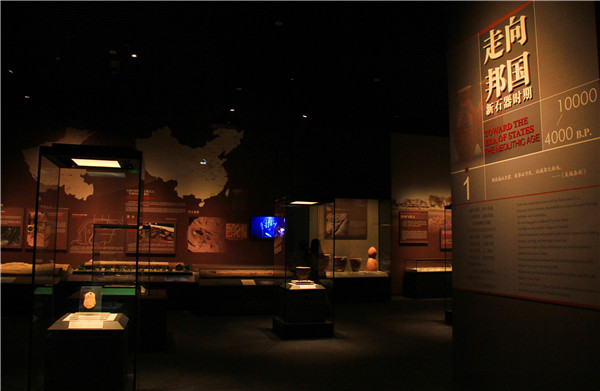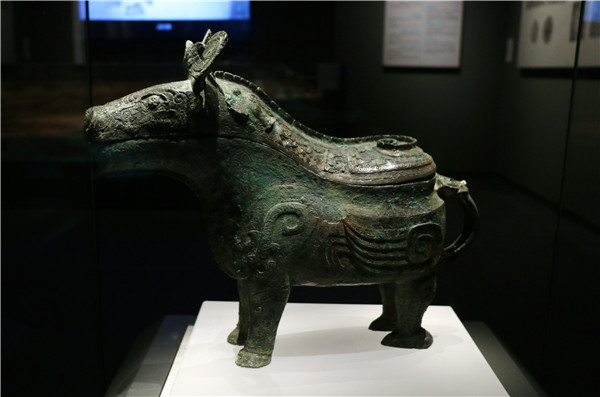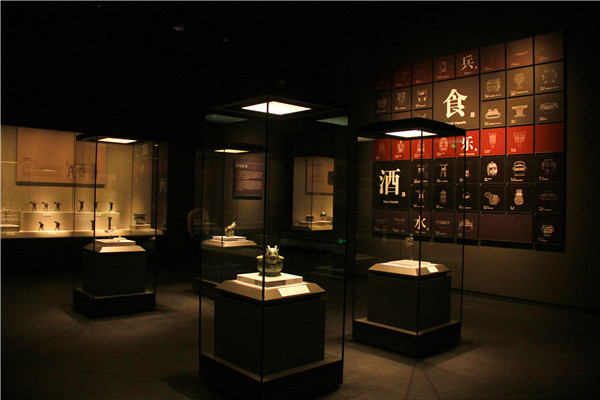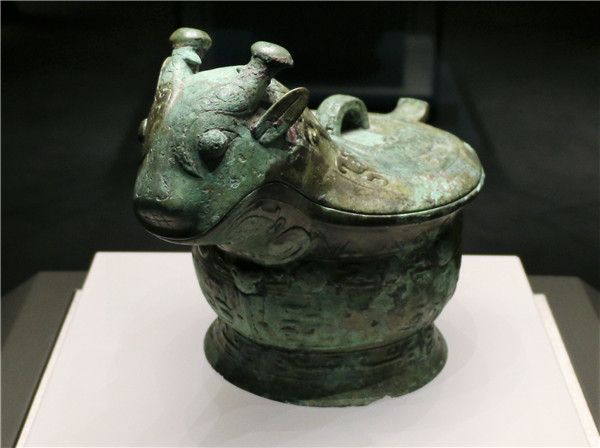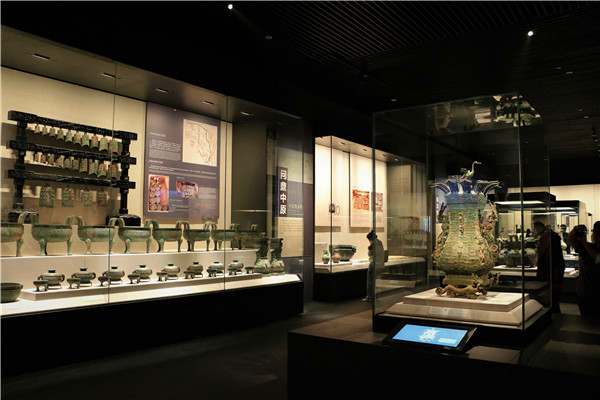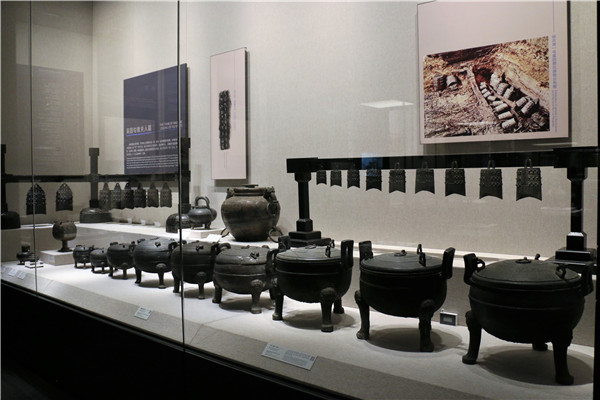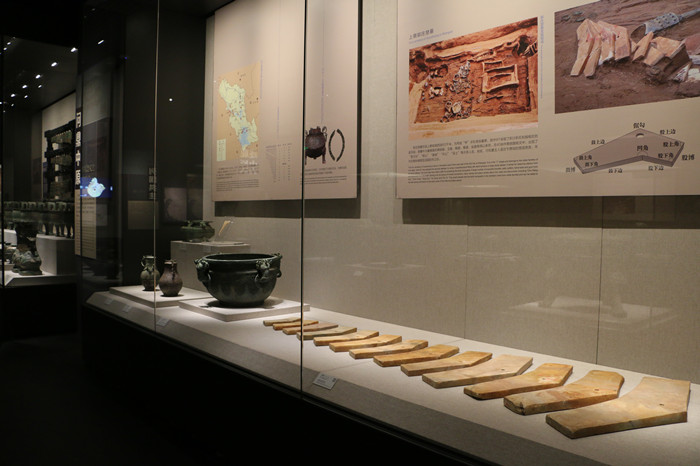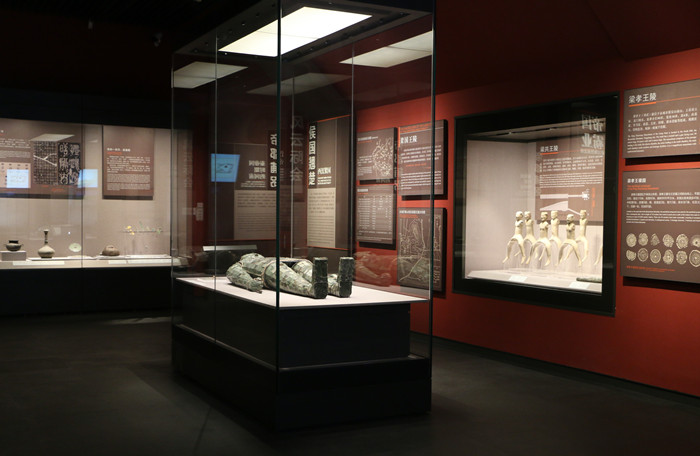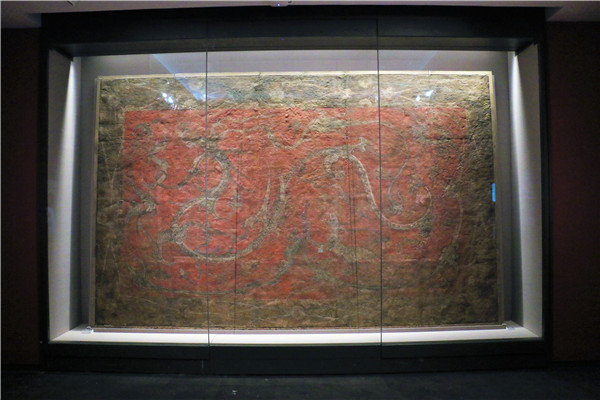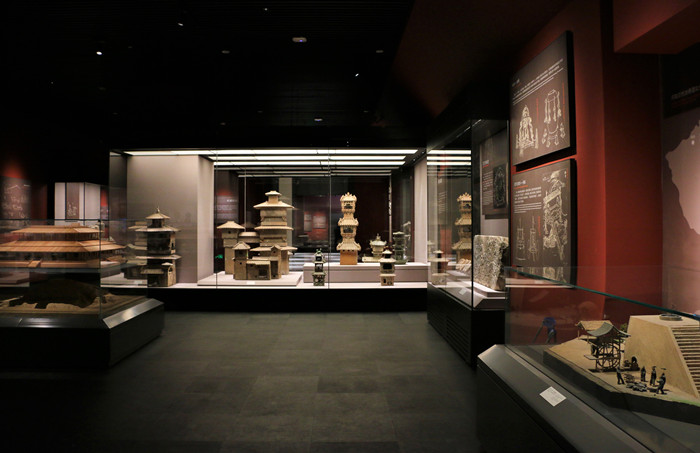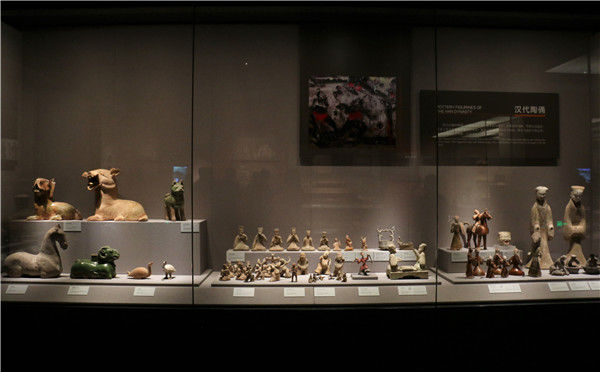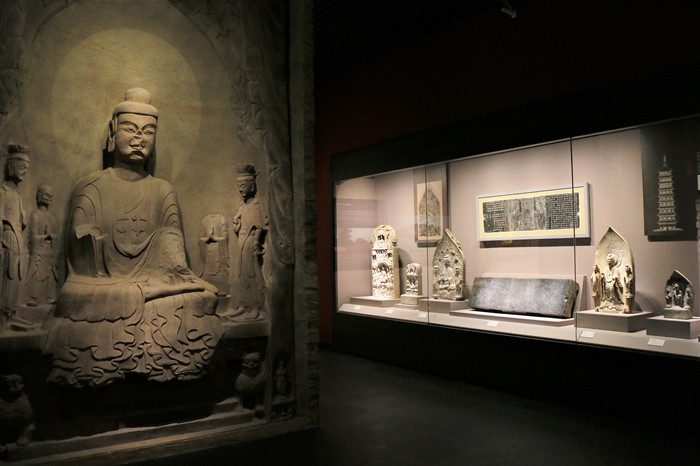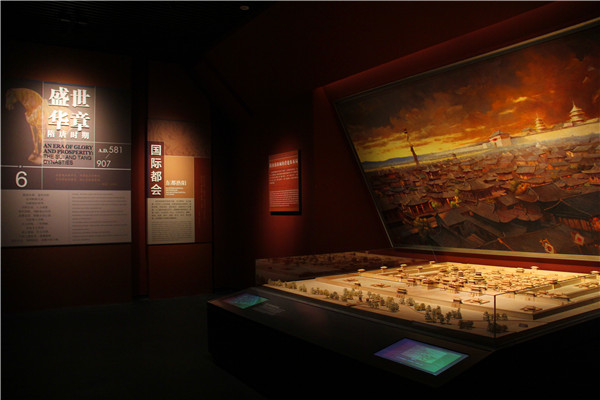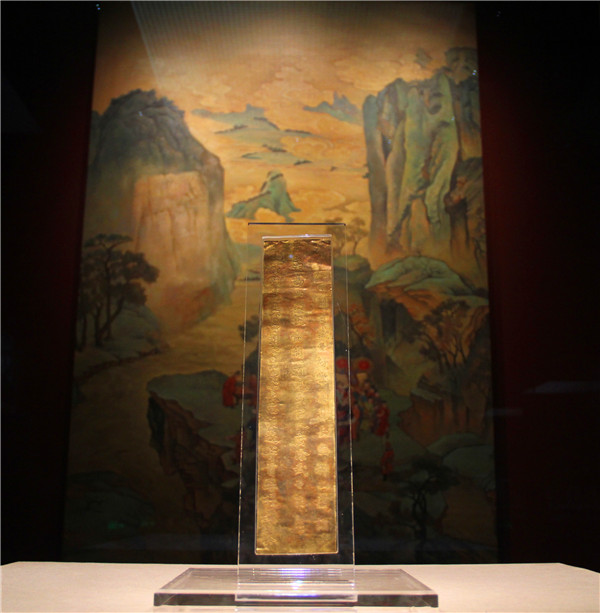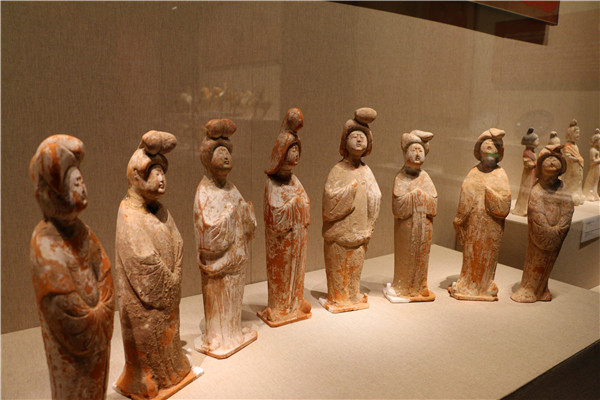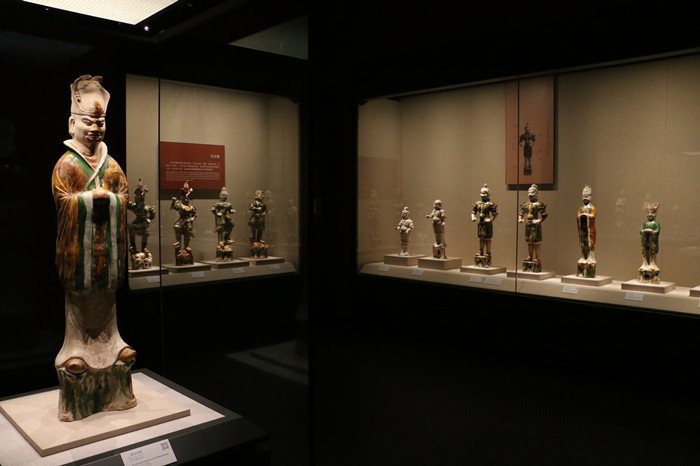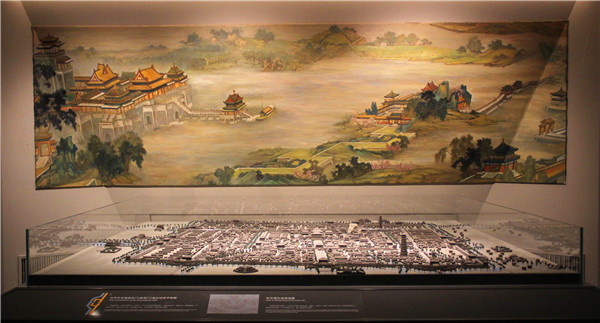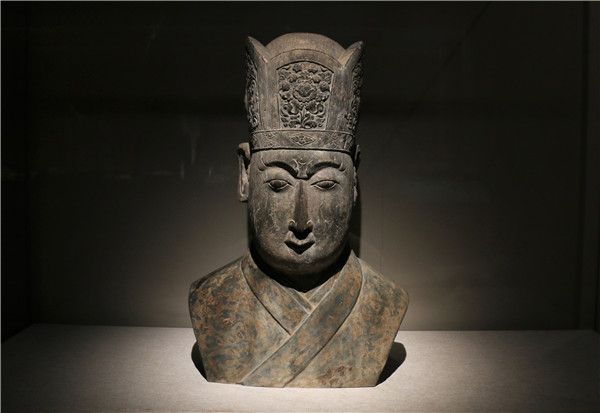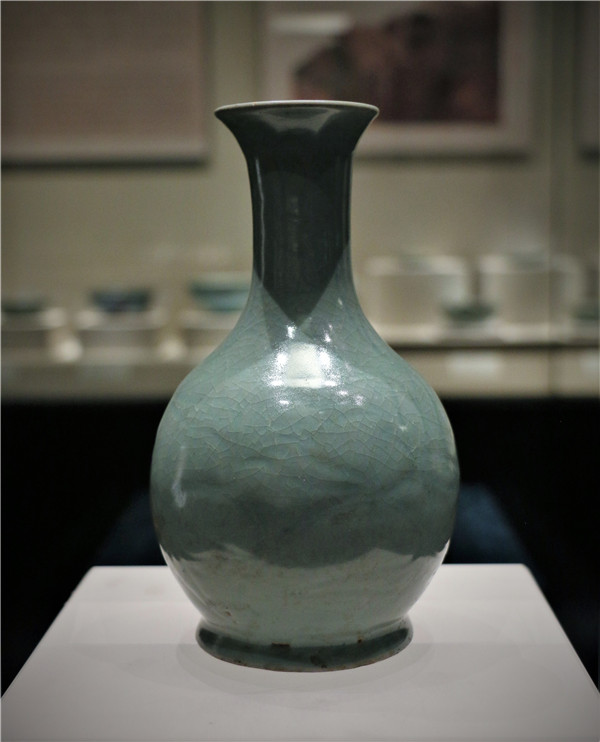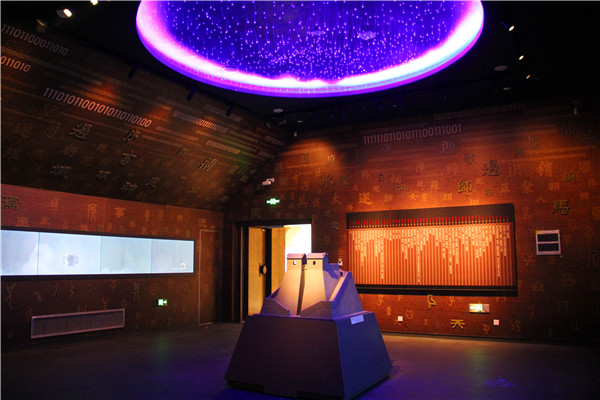Exhibition venue: Hall 1-10, main exhibition hall of Henan Museum
Exhibition time: permanent exhibition
Organizer: Henan Museum
"Grand China" on basic display Taking the history of Central Plains as the main line, the development history of Central Plains Civilization as the outline, and the background of world civilization as the reference, the paper integrates the cultural relics advantages of Henan, grasps the shining points in the ancient development of Central Plains, shows the development track of Chinese civilization, reappears the long and brilliant culture of Central Plains, as well as the influence and radiation of Central Plains culture. At the same time, from the perspective of globalization, it shows the similarities and differences between the Central Plains culture and other regional cultures, and unfolds the dialogue between Yellow River civilization, marine civilization and grassland civilization.
The basic exhibition hall is located on the 1st, 2nd and 3rd floors of the main exhibition hall. It is divided into 10 exhibition halls. It consists of seven parts: Neolithic age, Xia and Shang Dynasties, Western Zhou Dynasty, Eastern Zhou Dynasty, Qin, Han, Wei, Jin, southern and Northern Dynasties, Sui and Tang Dynasties, song, Jin and Yuan Dynasties.
The construction of ancient Chinese capital city has gone from "building a capital in the middle of the country" to "building a palace in the middle" in the capital city. The traditional idea of "seeking the middle" has been carried out in the palace city. The earliest source is in Henan Province.
Henan is the earliest capital of Chinese civilization.
The earliest "China" was in Henan.
Lobby
Henan is located in the hinterland of the Central Plains. The geographical advantages of four tributaries to lijiun conform to the ancient concept of "choosing the middle to build the capital". In history, more than 20 dynasties established their capitals here. From the earliest summer capital of Erlitou to the capital of Shangqiu in the Late Jin Dynasty, Henan has been a special position as a political, economic and cultural center in Chinese history for more than 3000 years. If we go further, the dense ancient human activity sites found along the line of Songshan since the late Paleolithic age, and then the evolution of the northern and southern settlements of Songshan in the whole Neolithic Age to the early state have laid the core position of Songshan, which is "in the world".
The first exhibition hall goes to the state -- Neolithic period (10000-4000 years ago)
From Peiligang culture period, Yangshao culture period to Longshan culture period in Central Plains, the ancestors experienced the origin of agriculture to the establishment of agriculture oriented, independent handicraft industry and the differentiation of specialized handicraft workshops, which brought about the gradual change from an equal society to a social class differentiation, which was the social basis of the initial civilization. The historical process of the origin of civilization in the Central Plains is the multi-level settlement structure produced by the central settlement, the emergence of large settlements and large city sites with the nature of capital, and finally the formation of the situation of city states. In this process, the early Chinese cultural circle structure formed in the Miaodigou period of Yangshao culture established the overall appearance of the external radiation of the Central Plains Dynasty in the whole pre Qin period. The site of Shuanghuaishu, a capital of more than 5000 years ago, is known as "Heluo ancient country", which proves the 5000 year history of Chinese civilization
Scene of the first exhibition hall
Jiahu Bone Flute
Double pot of painted pottery
The establishment of Central Plains in the second exhibition hall -- Xia Shang period (2070-1046 BC)
The typical sites at the end of Longshan Culture in the Central Plains along the Songshan line, such as Wangchenggang in Dengfeng, Wadian in Yuzhou, huadizui in Gongyi, etc., not only outline the activity track of the early Xia people, but also are the initial form of the early state evolution. The capital cities of Xia Dynasty, represented by Erlitou site, Zhengzhou commercial city and Anyang Yin Ruins, reflect the politics, economy, material culture and so on of Xia and Shang Dynasties, as well as the strong cultural radiation formed with the Central Plains as the core. Many ideas and regulations in the Xia and Shang dynasties had a profound impact on later generations, such as the central axis of the palace city and the three regulations of one gate in the city gate of Wangdu were directly inherited by later generations. With oracle bone inscriptions, the earliest mature characters, exquisite bronze casting and exquisite jade treatment techniques, the Yin Ruins in Anyang pushed the culture of Chinese Bronze Age to a peak and showed us a mysterious dynasty that had been annihilated for a long time.
Scene of the second exhibition hall
"Si Mu Xin"
Oracle bone inscriptions of Shang Dynasty
The third exhibition hall houses China -- the Western Zhou Dynasty (1046-771 BC)
For example, Beidou was in the center of heaven, and the ancient rulers also believed that the king should build his own capital in heaven and earth to meet the destiny of heaven. According to the ancient books, since the Xia Dynasty, the rulers had the practice of "seeking the middle". He Zunzhong's inscription of "dwelling in China" is the best interpretation of the ancient practice of building a capital in China, and it is also the earliest generation of the concept of "China". As the ruling center of the Zhou Dynasty, the king and ministers of the Zhou Dynasty lived here in the early years of the Western Zhou Dynasty. The exquisite cultural relics unearthed from the Western Zhou tomb in the northern kiln of Luoyang show the cultural features of Chengzhou as the eastern capital of the Western Zhou Dynasty. The ritual system of the three dynasties was inherited and created. The artifacts of the tomb of changzikou in Luyi have the characteristics of the Shang Dynasty culture, which shows the cultural inheritance of the Shang system in Zhou Dynasty. The rites and music of the Duke of Zhou regulated the patriarchal clan system. The cultural relics combination of the aristocratic tombs of Guo State in Sanmenxia and Yingguo aristocratic cemetery in Pingdingshan are the materialized representations of this ritual phenomenon, reflecting the cultural creation of Zhou people, and pushing the ritual system of the early state to maturity.
Scene of the third exhibition hall
The "eldest son's mouth"
Yingguo jade pendant with excellent color matching
The fourth exhibition hall pursues the Central Plains -- Eastern Zhou Dynasty (770-221 BC)
When the king of Zhou moved eastward, he lost his position as the common master of the world. As a result, there were disputes among the countries, and the overlords came out frequently. They all aimed at chasing the Central Plains. Since Yu made nine tripods to symbolize Kyushu, the tripod has become the symbol of state power. In the Eastern Zhou Dynasty, the tripod with different shapes and shapes was not only the embodiment of the cultural diversity of the vassal states, but also a symbol of the struggle for hegemony. In Henan Province, the Central Plains ware making style and Chu's making style, represented by the three Jin Dynasties, have formed their own influence on the surrounding small countries, which is the reflection of the overall situation dominated by the pattern of Jin Chu struggle for hegemony in the Eastern Zhou Dynasty. The state of Chu occupied Nanyang Basin, choked the Xia Road, built the pass and built the Great Wall. In accordance with the stability of the Fangcheng and the danger of the Han River, the state of Chu has become the psychological support of its ambition since King Zhuang ruled the Central Plains. The continuous decline of the ruling power has also brought impact to the solidified social class. Under this background, the various schools of thought contend and the creation of the original code, thus forming the era of Chinese cultural axis.
Scene of the fourth exhibition hall
The different shapes of the nine Kingdoms
Stone chimes of Chu state
Imperial hegemony in the fifth exhibition hall: Qin, Han, Wei, Jin, southern and Northern Dynasties (221-581 BC)
In the 3rd century B.C., after Qin unified the six states, the system of prefectures and counties was carried out. At that time, 36 counties were set up in the whole country, and 7 counties were monopolized by Henan Province. The Central Plains became the place where the Qin Empire was assisted.
Mangdangshan, Yongcheng, is not only the source of the Han Dynasty's Gaozu's prosperity, but also the location of Liang, an important vassal state in the Western Han Dynasty. In 202 B.C., Peng Yue was first granted the title of king of Liang by Emperor Gaozu of Han Dynasty. Liu Wu, the younger brother of emperor Jing of the later Han Dynasty, was granted the title of King Xiao of Liang. The murals of the four gods and the golden thread jade clothes unearthed from the mausoleum of the Liang king in Mangdangshan, Yongcheng, all reflect the powerful power of the Liang state in the Western Han Dynasty.
After the establishment of the Eastern Han Dynasty, Liu Xiu set its capital in Luoyang, and later Cao Wei, the Western Jin Dynasty and the late Northern Wei Dynasty took it as the capital. Luoyang City in the Han and Wei dynasties experienced several ups and downs in the frequent changes of dynasties, but it was always the core of the country, and played an important role in the prosperity of Han culture and the blending of different ethnic cultures. At the end of the Eastern Han Dynasty, Emperor Xian of the Han Dynasty moved his capital to Xu (now Xuchang). During the period of the Three Kingdoms, the Central Plains was dominated by Wei, and Xuchang was one of the five capitals of Wei. Nanyang was the hometown of Liu Xiu, Emperor Guangwu, and was later designated as the capital of Nandu. Luoyang, Nanyang and Xuchang, as the imperial capitals and towns, witnessed the changes of the Han and Wei dynasties.
Scene of the fifth exhibition hall
Fresco of four gods
A group of calligraphy art inscriptions
The sixth exhibition hall: the period of Qin, Han, Wei, Jin, southern and Northern Dynasties (221-581 BC)
During the Qin and Han Dynasties, the country was unified and its national strength was strong. The extensive use of iron tools promoted the progress of agriculture and the development of manor economy. The various pottery figurines and architectural artifacts of Han Dynasty reflected the richness and diversity of manor culture. The farm of Han Dynasty in sanyangzhuang reproduces the life of Han Dynasty farmers who worked on the Bank of the Yellow River. With the rapid development of handicraft industry and science and technology, many world leading scientific and technological achievements have emerged, such as iron smelting, papermaking, textile, porcelain making, medicine, astronomy, etc. Since the opening of the Silk Road, economic and cultural exchanges between China and foreign countries have been strengthened, and the Central Plains region has become the world's business center.
During the Wei, Jin, southern and Northern Dynasties, the society was divided and separated for a long time. The fusion of various nationalities reached an unprecedented depth and breadth in frequent wars and migrations. Literature, painting and grotto art flourished and flourished. Many epitaphs of the Northern Wei Dynasty unearthed in Luoyang reflect the historical facts of Emperor Xiaowen's southward migration and reveal the evolution of foreign exchange and national integration since the formation of the Han Empire.
Scene of the sixth exhibition hall
Pottery figurines and dogs in Han Dynasty
Stone Buddha
Exhibition hall No.7: prosperous period of Sui and Tang Dynasties (581-907 A.D.)
The unification of the north and the south in Sui dynasty laid the foundation for the prosperous Tang Dynasty. The cultural relics unearthed from Zhangsheng tomb in Anyang are rich, covering all aspects of daily life and reproducing the life scenes of aristocratic bureaucrats in Sui Dynasty.
As the eastern capital of Sui and Tang Dynasties, Luoyang has a very important strategic position. It is not only the central hub of the Grand Canal, but also the intersection of the land and sea silk road. The convenient water and land transportation makes all directions converge and the business economy is very prosperous. Wu Zetian managed Luoyang a lot, making Luoyang an international metropolis, ranking above Chang'an. It was another center of politics, military, economy and culture in Sui and Tang Dynasties. Wu Zetian's gold slips and other relics related to Wu Zetian reveal the close relationship between the empress and the God capital Luoyang.
The prosperity of the Silk Road promoted the integration of various ethnic cultures. The Western foreign cultures such as money, patterns, costumes, musical instruments, music and dance theories, spices and religions added a strong exotic cultural color to the life of the people in the Sui and Tang Dynasties.
Scene of the seventh exhibition hall
Jin Jian of Wu Zetian's punishment
Exhibition hall 8: the prosperous period of Sui and Tang Dynasties (581-907 A.D.)
In Tang Dynasty, the economy was prosperous, the politics was enlightened, the society was rich, and the cultural life was colorful. Many works of art created by the people of the Tang Dynasty embody the inclusive and open spirit of the times. They are the concentrated embodiment of the social style and humanistic spirit of the Sui and Tang Dynasties. The gorgeous tricolor ware made in Huangye kiln of Gongyi is the representative of Tang Dynasty, which embodies the magnificence of material culture in Tang Dynasty. Xiangzhou kiln, Dengfeng kiln, duandian kiln, Hebi kiln and other kilns produced colorful porcelain, which laid the foundation for the peak of porcelain industry in Song Dynasty. A large number of terra cotta figures of civil servants, warriors and ladies in the Tang Dynasty truly reflect the graceful life of the Tang people. Tea sets of different materials make us see the prevalence of tea culture in Tang Dynasty. The culture and art of Sui and Tang Dynasties not only inherited the tradition of Han and Wei dynasties, but also accepted the artistic styles of various nationalities and foreign religions. Famous calligraphers and painters emerged in large numbers. Epitaphs, murals and tomb line depiction reflected the unique atmosphere of calligraphy and painting art in the Tang Dynasty. Henan is the spreading center of Taoism and Buddhism in Sui and Tang Dynasties. There are a large number of pagodas, stone tablets, stone sculptures and other relics, reflecting the inclusiveness of religious culture in Sui and Tang Dynasties.
Three color camels and camel figurines on the Silk Road
Elegant female figurines of Tang Dynasty
A group of military officials and civil servants in the Tang Dynasty
Hall 9: Menghua, Tokyo, song, Jin and Yuan Dynasties (960-1368)
"The culture of the Chinese nation, after thousands of years of evolution, was created in the era of Zhao and song."
Tokyo City in the Northern Song Dynasty was an international metropolis more than a thousand years ago. Its developed water system connected with the inland shipping, directly connected to the port, and sailed to the vast maritime Silk Road. The riverside picture of Qingming Festival shows the prosperous scene in Tokyo, where people live leisurely, with rich material and developed commodity economy. Under the policy of valuing culture and neglecting military, the prosperity of culture and education in Northern Song Dynasty, especially the development of imperial examinations and academies, opened more channels for the lower class to transform into the upper class. Under the promotion of scholar officials, Neo Confucianism became an important thought in song, Jin, yuan and later dynasties. The prosperity of Commerce promoted the development of secular culture. In the song, Jin and Yuan Dynasties, the traditional poems, songs, dances, music and techniques were applied to the stage to depict ordinary people and show the customs of the market. The brick figurines of various forms in Zaju opera show the new sound of music and drama at this time.
Bustling Tokyo City
Vivid pottery figurines
Beautiful stone head
Hall 10: Menghua, Tokyo, song, Jin and Yuan Dynasties (960-1368)
The song, Jin and Yuan Dynasties were the golden period in the history of Chinese ceramics. The Central Plains area was prosperous in official kilns, represented by Ru porcelain, Jun porcelain and Zhanggongxiang porcelain, which reflected the aesthetic taste of the Song Dynasty's "Dao Zhi Jian". There are many folk kilns, such as Linru kiln, hebiji kiln, Dangyangyu kiln and other folk kilns. The coexistence of white ground and black flower, printing, picking, marking and engraving techniques tends to be aesthetic diversification, presenting the brilliant and colorful scene of ceramic industry in this period.
Porcelain pillows with different shapes
Blue vase with goose neck
Caudal Hall
According to the Song Mountain and the Yellow River, the Chinese ancestors established their country in China and created civilization.
The culture of the Central Plains has the status of origination and mother in the Chinese civilization system; the Central Plains is the political, military, economic and cultural center in ancient Chinese history, which has a strong radiation and influence on the surrounding areas; the history of the Central Plains from the primitive society to the song, yuan, Ming and Qing Dynasties has no fault, and the history of the Central Plains is the epitome of Chinese history; since ancient times, the culture of Central Plains has been constantly changing with the times The cultural exchange and integration of the surrounding cultures absorb the excellent elements of various cultures and realize their own sublimation; the Central Plains culture absorbs the achievements of foreign cultures, continuously carries out creative transformation, melts into its own cultural characteristics, and constantly radiates new vitality and vigor.


